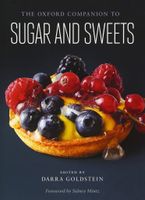Advertisement
City
Published 2015
The sweet specialties for which the countries of the former empire are renowned often resulted from the rivalries among both pastry cooks and their patrons in nineteenth-century Vienna and the provincial capitals. Elite confectionery was a highly urban phenomenon that depended on costly ingredients such as eggs, sugar, fresh butter, cream, and, in later years, chocolate, as well as a highly skilled, rigorously regulated, yet fiercely competitive workforce of pastry cooks and confectioners. In Vienna, the court was long the arbiter of taste, yet unlike Versailles, it never had the staff to be self-sufficient and therefore depended on town confectioners for its catering needs. See court confectioners. As the bourgeois population of the cities swelled during the Biedermeier period (1815–1848), the sweetshops’ customers were increasingly middle-class women who used pastry as a tool for social advancement. Occasionally, this phenomenon was made explicit, as in


